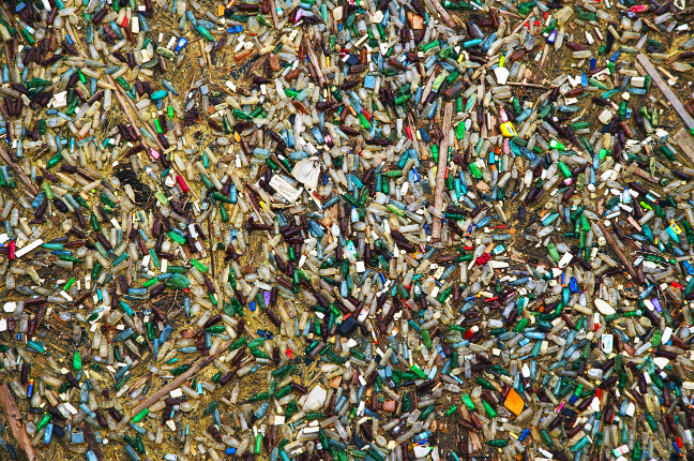As we learned in July, the world is awash in plastic trash. We've produced more than 9 billion tons of plastic since the middle of the 20th century and most of it lingers in landfills and recycling piles, in our oceans, on our beaches, and in our bodies. It's not going anywhere anytime soon. It's our toxic legacy.
But it doesn't have to be. We can look at the mounds of plastic waste and marine animals with stomachs full of plastic and throw up our hands. Or we can take action and simply stop using or reducing how much of these disposable plastic products we are consuming in the first place.
We often say that the best way to protect clean water is to stop pollution at the source. That means cutting pollution from power plants, reducing runoff from farms and streets, and more. The same is true when it comes to plastic pollution. We need to stop it at the source which is you, me, all of us as consumers and the businesses we frequent.
67% of street litter in the San Francisco Bay Area comes from food businesses, according to a study conducted by Clean Water Fund. The bulk of that is plastic waste - disposable cups and plates, food packaging, and straws. Reducing this massive source of plastic garbage would go a long way toward changing our toxic legacy. We need partners in business and government to focus on cost beneficial solutions at the business and institutional level. We need to give the folks primarily responsible for causing plastic pollution the incentives to stop creating it.
Clean Water Action and Clean Water Fund’s ReThink Disposable program focuses on getting food-serving businesses and institutions to change the way they serve their products to consumers. Many of our partners are skeptical at first, but once they implement small changes—to use reusable plates instead of in single-use disposable food-ware, to avoid single-use plastic bags, to introduce reusable cups instead of disposable ones, to ditch plastic straws and single use condiment packages—they save money, and their customers are happier.
An average small food business can save $5,000 a year by ReThinking Disposable. It can prevent more than 2,100 pounds of trash entering the waste stream or local waterways and the ocean, that’s 104,000 pieces of disposable foodware eliminated every year. At the same time, it can prevent the emissions of 6 metric tons of greenhouse gases. It’s a no-brainer, a win-win. We’ve already helped over a hundred businesses and institutions in California make the switch, with a goal of 200 more Rethink Disposable certified businesses and institutions in California by 2018, and are expanding the program to New Jersey and Rhode Island. This is a program that needs to be taken to scale - can you imagine if governments, institutions and businesses large and small made this kind of change?
Last month was "Plastics Free July". There were a lot of videos and images of the impacts of plastic waste on seabirds and marine animals and maybe you wondered what you can do. You can join us to ReThink Disposable. For every video you see on Facebook of a whale with its stomach pumped full of plastic, give a thought to the small business owner who is struggling to turn a profit, serving food. Now, picture them saving thousands of dollars each year by switching to less polluting products, helping to reduce tons of plastic waste, and helping us build a powerful new legacy.

 Clean Water Action and Clean Water Fund
Clean Water Action and Clean Water Fund